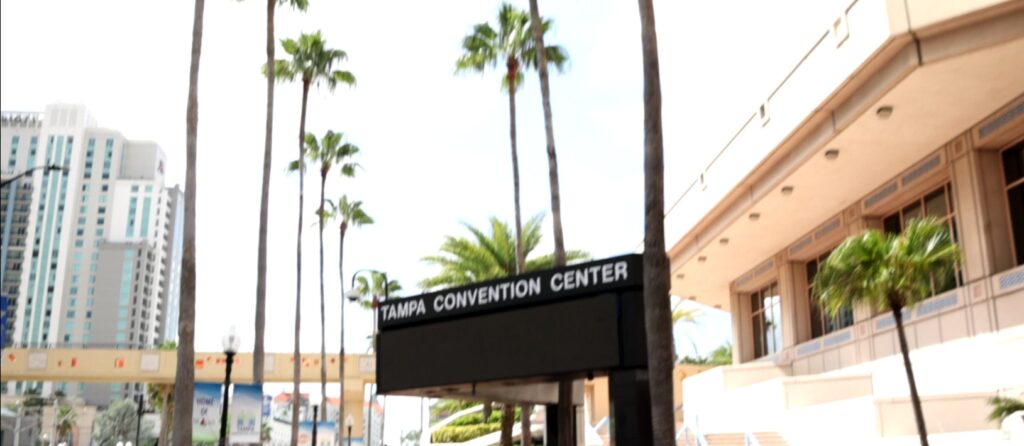cities | Tampa
Tampa
Tampa is the anchor city of the Tampa Bay region and it’s where most people think of when they’re considering moving to the area. We’re talking about a major metropolitan city with over 400,000 people in the city limits and close to 3 million in the greater metro area. Tampa has this unique mix of being a real city with downtown high-rises, a professional sports scene, and urban energy, while still maintaining that Florida lifestyle with water access, warm weather year-round, and a more laid-back vibe than you’d find in places like Miami or even Atlanta. The job market is strong with finance, healthcare, technology, and tourism driving the economy. You’ve got MacDill Air Force Base which brings military families. And the lifestyle offers something for everyone – urban downtown living, historic neighborhoods, suburban communities, and everything in between.


SEARCH Tampa LISTINGS
discover more about Tampa
Tampa sits on the eastern shore of Tampa Bay, and that water access is a big part of the identity here. You’ve got the Hillsborough River running through downtown, Bayshore Boulevard along the bay with those iconic views, and you’re close to the Gulf beaches even though you’re not directly on the coast. The city has grown significantly over the past couple decades as people have discovered what Tampa has to offer.
The climate is subtropical, which means hot and humid summers but really pleasant weather from October through May. Yeah, you’re dealing with hurricane risk and summer afternoon thunderstorms, but that’s part of living in Florida. Most people find that the weather trade-off is worth it to avoid harsh winters.
The layout of Tampa is spread out. You’ve got downtown Tampa as the central business district, then neighborhoods radiating out in all directions. South Tampa is the historic urban core. New Tampa and Wesley Chapel are the newer suburban growth to the north. Westchase and Town ‘n’ Country are to the west. Brandon and Riverview are to the east. It’s a big area, and your experience living in Tampa really depends on which specific part of the city or metro area you’re in.
explore Tampa
Downtown Tampa has really come alive over the past 10-15 years. You’ve got the Riverwalk connecting different parts of downtown along the Hillsborough River – Armature Works, Water Works Park, Curtis Hixon Park, the Tampa Museum of Art, the Straz Center. There are new apartment and condo buildings going up, restaurants and bars opening, and more people actually living downtown instead of it just being a place people commute to for work.
Ybor City is Tampa’s historic Latin quarter with the nightlife scene on 7th Avenue. The Channel District has Sparkman Wharf and Amalie Arena where the Lightning play. Hyde Park Village is the upscale shopping and dining area in South Tampa. Each neighborhood and area has its own character and vibe.
For sports, you’ve got the Tampa Bay Lightning (NHL), the Buccaneers (NFL), and the Rays play baseball over in St. Petersburg. During spring training, the Yankees train at Steinbrenner Field in Tampa. The sports scene is actually a big part of the culture here, especially after the Lightning won back-to-back Stanley Cups and the Bucs won the Super Bowl with Tom Brady.
The restaurant scene in Tampa has gotten really good. You’ve got everything from Cuban sandwiches at La Segunda to upscale dining in Hyde Park to breweries and food halls. Bern’s Steak House is a Tampa institution. Armature Works has the food hall concept with tons of options. And the diversity of food reflects the diverse population – Cuban, Colombian, Mexican, Vietnamese, you name it.
Tampa highlights & amenities
Tampa International Airport is consistently rated one of the best airports in the country, and having that as your home airport is a huge convenience. Direct flights to most major cities, easy to navigate, and it’s usually pretty efficient.
The job market in Tampa has been strong. You’ve got major employers like JPMorgan Chase, Citibank, Raymond James Financial in the finance sector. Hospitals like Tampa General and Moffitt Cancer Center in healthcare. Tech companies have been expanding here. And the military presence at MacDill Air Force Base employs thousands. Unemployment has generally been low, and salaries have been increasing, though they still lag behind what you’d make in major metro areas like New York or San Francisco.
For education, the University of South Florida is a major research university in Tampa. The University of Tampa is in downtown. And there are community colleges and technical schools throughout the area.
Tampa has parks and outdoor recreation throughout the city – Bayshore Boulevard for running and biking, Lettuce Lake Park, Al Lopez Park, and you’re close enough to the beaches that a beach day is totally doable on weekends.
get to know Tampa
Tampa attracts all types of people. You’ve got young professionals moving here for jobs in finance and tech. Families relocating from other states for the weather and lifestyle. Military families stationed at MacDill. Retirees looking for warm weather. College students at USF and UT. The diversity is one of Tampa’s strengths – economically, ethnically, and in terms of age demographics.
The real estate market in Tampa varies wildly depending on where you’re looking. South Tampa with areas like Hyde Park, Palma Ceia, and Beach Park – you’re looking at $500k to well over a million for single-family homes. The urban core and downtown condos range from $200k for smaller units to $500k+ for luxury condos. The suburban areas like New Tampa, Carrollwood, and Westchase have more affordable options with single-family homes in the $300k-$600k range typically. And then the areas that are technically Tampa but feel more like suburbs – Brandon, Riverview – you can still find homes under $400k in some pockets.
The market has been competitive, especially from 2020-2022 when prices surged. Things have cooled off a bit in 2024 and 2025, but inventory is still relatively tight and prices have held up better than a lot of people expected. If you’re considering Tampa, you really need to narrow down which part of the city or metro area fits your lifestyle and budget, because saying “I want to live in Tampa” could mean a hundred different things.
Tampa FAQs
What’s the job market really like in Tampa?
The job market in Tampa has been pretty strong over the past several years. Finance and banking is huge here – you’ve got JPMorgan Chase, Citi, Raymond James, and other financial companies with major operations. Healthcare is another big employer with Tampa General Hospital, Moffitt Cancer Center, and the various hospital systems. Tech has been growing with companies expanding here or relocating. And then you’ve got tourism, hospitality, construction, and all the service industry jobs that support a growing metro area. Salaries in Tampa are generally lower than what you’d make in major cities like New York or San Francisco, but the cost of living is also lower. If you’re in finance or tech, you can find good-paying jobs. If you’re in service industry or retail, it can be tougher to make ends meet with the rising housing costs. Overall, if you have marketable skills and you’re flexible, you should be able to find work in Tampa, but don’t expect the same salary you’d get in a major coastal city.
How does Tampa’s cost of living compare to other cities?
Tampa used to be significantly cheaper than cities like New York, San Francisco, or even Atlanta. That gap has narrowed quite a bit over the past few years as housing prices and rents have increased. You’re still going to save money compared to those expensive coastal cities, especially because Florida has no state income tax. But Tampa is no longer the affordable haven it was five or ten years ago. Housing is the biggest expense that’s gone up – home prices have basically doubled in many areas since 2019. Rent has increased significantly too. Other costs like food, gas, utilities are all in line with national averages or slightly higher. Car insurance in Florida is notoriously expensive. So while Tampa is still more affordable than high-cost cities, it’s not cheap anymore, and you need to run your budget carefully, especially if you’re relocating from a lower-cost area or if your salary isn’t keeping pace with the cost increases.
What are the best areas to live in Tampa for young professionals?
It depends on what you’re looking for. If you want walkability and urban living, look at downtown Tampa, the Channel District, or neighborhoods like Tampa Heights and Seminole Heights. You’ll be close to restaurants, bars, and nightlife, and you can walk or bike to a lot of places. Hyde Park is more upscale but also very walkable with the village area. If you want more space and don’t mind driving, Westchase, New Tampa, and South Tampa neighborhoods offer more house for your money with good amenities. A lot of young professionals end up in South Tampa, Seminole Heights, or downtown because they like the lifestyle and being close to the action. But it really comes down to your budget, whether you have kids or pets, and whether you prioritize walkability or space. I always tell people to visit different areas at different times of day to get a feel for what fits your lifestyle.
Is Tampa safe?
Safety in Tampa varies significantly by neighborhood. Some areas like South Tampa, Westchase, New Tampa, and Carrollwood have low crime rates and feel very safe. Other areas, particularly some neighborhoods in East Tampa and parts of North Tampa, have higher crime rates. Downtown Tampa is generally safe in the main areas during the day and early evening, but like any urban area, you need to be aware of your surroundings, especially late at night. Property crime like car break-ins and package theft can happen anywhere, even in nice neighborhoods, so you need to lock your doors and not leave valuables visible in your car. Overall, most people living in Tampa feel safe in their neighborhoods, but you absolutely need to research specific areas and streets before you buy or rent. Check crime maps, visit at different times of day, and talk to people who actually live there. Don’t just rely on someone telling you “Tampa is safe” or “Tampa is dangerous” – it’s way too big and diverse for blanket statements like that.

